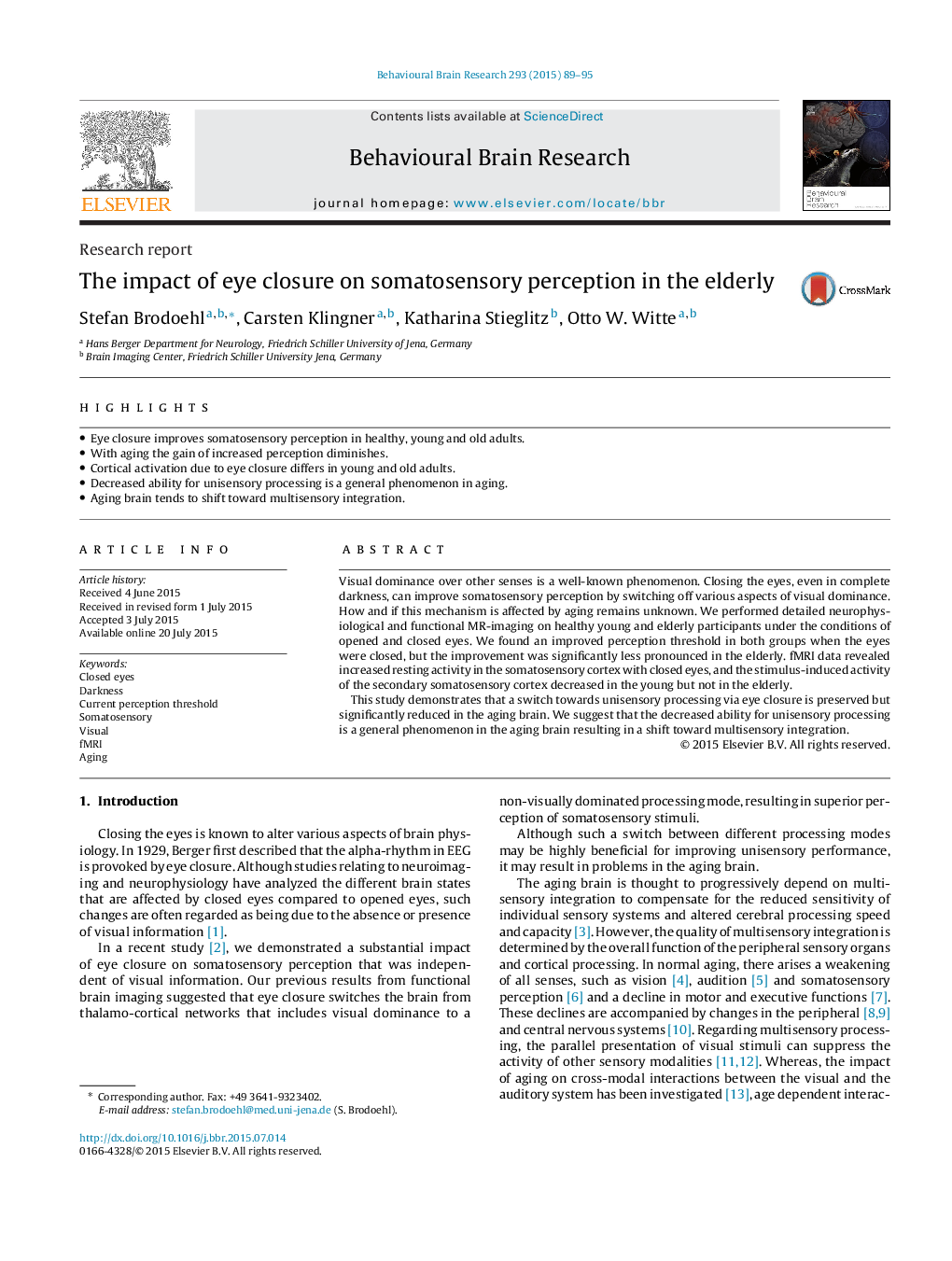| Article ID | Journal | Published Year | Pages | File Type |
|---|---|---|---|---|
| 6256599 | Behavioural Brain Research | 2015 | 7 Pages |
â¢Eye closure improves somatosensory perception in healthy, young and old adults.â¢With aging the gain of increased perception diminishes.â¢Cortical activation due to eye closure differs in young and old adults.â¢Decreased ability for unisensory processing is a general phenomenon in aging.â¢Aging brain tends to shift toward multisensory integration.
Visual dominance over other senses is a well-known phenomenon. Closing the eyes, even in complete darkness, can improve somatosensory perception by switching off various aspects of visual dominance. How and if this mechanism is affected by aging remains unknown. We performed detailed neurophysiological and functional MR-imaging on healthy young and elderly participants under the conditions of opened and closed eyes. We found an improved perception threshold in both groups when the eyes were closed, but the improvement was significantly less pronounced in the elderly. fMRI data revealed increased resting activity in the somatosensory cortex with closed eyes, and the stimulus-induced activity of the secondary somatosensory cortex decreased in the young but not in the elderly.This study demonstrates that a switch towards unisensory processing via eye closure is preserved but significantly reduced in the aging brain. We suggest that the decreased ability for unisensory processing is a general phenomenon in the aging brain resulting in a shift toward multisensory integration.
